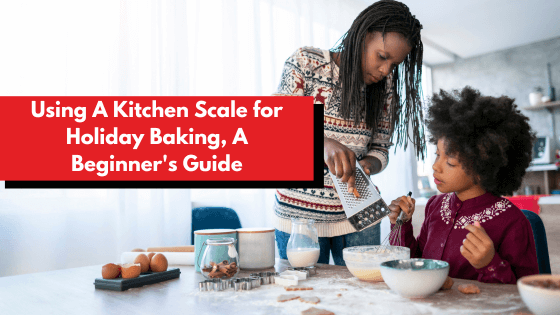
Choosing the Right Kitchen Scale
When it comes to home cooking, precision can make a significant difference in the outcome of your recipes. Whether you’re baking a loaf of bread or whipping up a gourmet meal, having the right kitchen scale can enhance your culinary experience. Here’s a guide to help you select the perfect kitchen scale for your needs.
Types of Kitchen Scales
Digital Scales
Digital kitchen scales are the most popular among home cooks and bakers. They provide quick and accurate readings and often feature a tare function, allowing you to subtract the weight of containers. Digital scales are very user-friendly, typically having only a couple buttons to operate the scale. LCD and LED displays are easy-to-read, especially displays with backlighting which is great for low light areas.

Mechanical Scales
These analog scales use a dial and are often seen as more traditional. Before there was digital weighing technology, mechanical scales were used exclusively for weighing ingredients. While they don’t require batteries, a mechanical kitchen scale can be less precise than digital models. If you enjoy a classic aesthetic in your kitchen, a mechanical scale could be an appealing choice.

Portion Control Scales
Ideal for those tracking their food intake, these scales typically have features that help you measure specific serving sizes. They’re usually compact and easy to use, making them great for anyone focused on nutrition or dietary restrictions. Portion control scales are typically digital.
Specialty Scales
Some models are specifically designed for weighing certain types of ingredients. For example, barista scales are made for measuring coffee beans, while baking scales may include a percent weighing function. Percent weighing function is great for measuring individual ingredients as a percentage, until all ingredients are in the container and up to 100%.
Key Performance Features to Consider
Capacity
Consider the maximum weight the scale can handle. If you frequently cook large meals or batch-bake, a scale with a higher capacity (often 11-22 lbs) will be beneficial. There are also scales available with even higher capacities, which may be necessary for large gatherings and weighing bulk ingredients. For everyday cooking, a capacity of 1-10 lbs is usually sufficient.
Accuracy
Look for a scale that offers precision down to the gram or ounce. This is particularly important for baking, where even a slight variation can affect your results. Scales with a resolution of 1 gram or 0.03 ounces are ideal.
Weighing Units
Choose a scale that allows you to switch between different units of measurement, such as grams, ounces, pounds, and kilograms. This versatility can simplify recipe conversions and make cooking more convenient.
Tare Function
A tare function allows you to zero out the weight of a container, enabling you to measure only the ingredients. This feature is essential for multi-ingredient recipes and can save you from extra cleanup.
Size and Design
Consider the scale’s size and how it fits into your kitchen. If counter space is limited, look for a compact model. Also, think about the design—choose a scale that matches your kitchen aesthetic and is easy to clean. Weight at Home offers a robust selection of kitchen scales in different colors, prints and design features.
Additional Features to Look For
Backlit Display
Digital kitchen scales with a backlit display can make it easier to read measurements, especially in dim lighting. Models with large displays are available as well, which are great for folks with vision issues.

Auto Shut-off
An auto shut-off feature can help save battery life by turning the scale off after a period of inactivity. Most digital models provide long battery life, even with consistent use, but the additional power savings with the auto shut-off function can extend that even further. Who likes changing batteries anyway?!
Waterproof or Spill-Resistant
If you often work with liquids or messy foods, a waterproof scale can be a practical choice, making it easier to clean up any spills. Being waterproof also protects the important internal components of the scale, reducing the risk of damage and decreased performance. Many spill-resistant scales are made from durable materials like stainless steel.
Conclusion
Choosing the right kitchen scale can elevate your cooking experience, ensuring accuracy and consistency in your recipes. By considering the type, features, and your cooking habits, you can find a scale that meets your needs and enhances your cooking and bakes. With the right scale, you’ll be well on your way to mastering the art of cooking with precision.
Happy weighing!



